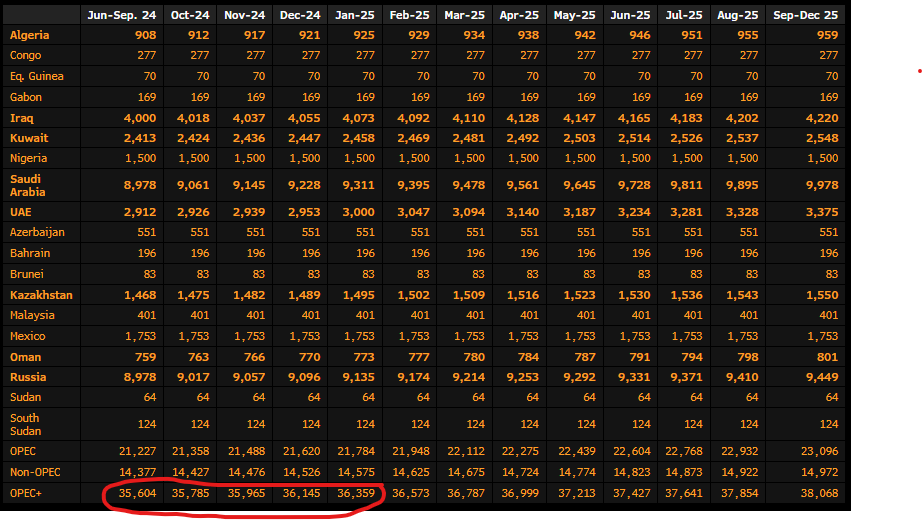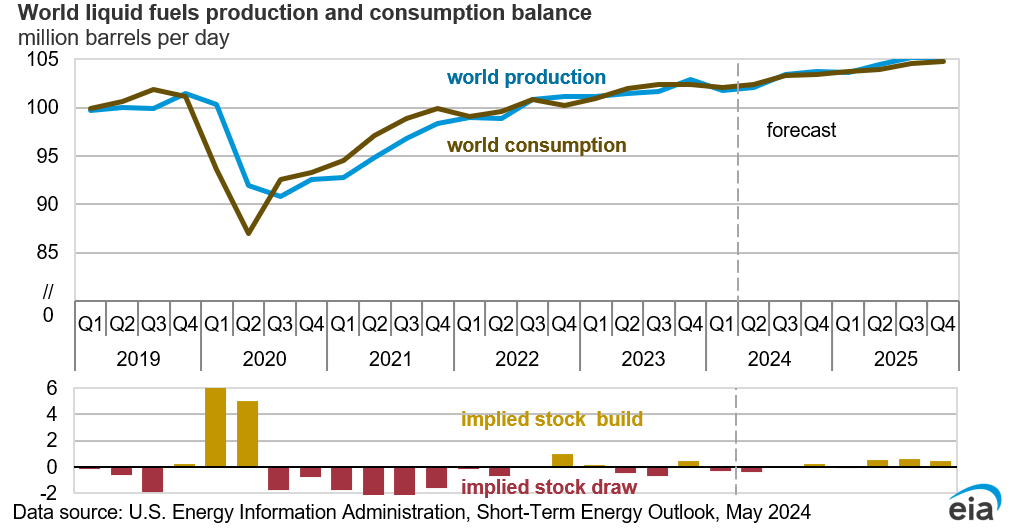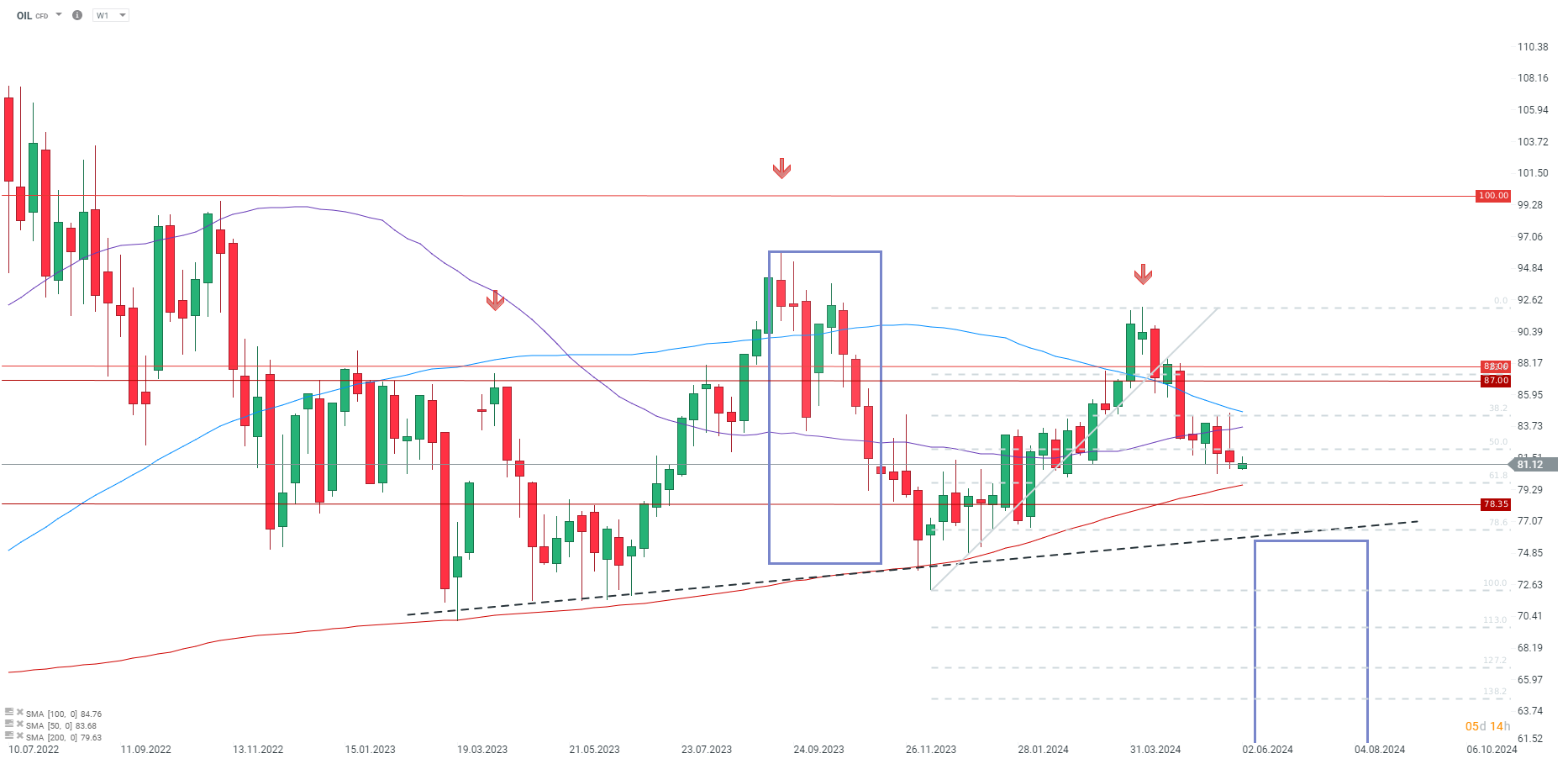- OPEC+ extends headline oil production cut of 3.66 million brk per day until the end of 2025 (previously until the end of 2024)
- OPEC+ extends voluntary production cuts until the end of September this year, then sets up a plan to raise production until September next year
- The United Arab Emirates is set to raise its main production limit next year by 300,000 brk per day, but will continue with voluntary cuts
- Countries that produce above the limits have pledged to increase compliance. However, there is no official record of this happening.
- Saudi Arabia has begun selling shares in Saudi Aramco and is expected to raise about $12 billion from the market
Longer cuts with exit plan
The OPEC+ decision was somewhat different from market expectations. Rather, analysts had indicated that OPEC+ would maintain voluntary production cuts until the end of this year and address the production compliance issue. Meanwhile, we got a slightly different decision:
Start investing today or test a free demo
Create account Try a demo Download mobile app Download mobile app- Maintain the main cut until the end of 2025
- Voluntary cut until September, and then a plan to gradually raise production until next September
- Raise the UAE's production limit, gradually by 300,000 brk per day between January and September 2025
In view of this, we have a longer cutting period, but a plan for a slow exit from the agreement. Saudi Arabia's energy minister indicated that OPEC+ will maintain a cautious and precautionary approach. He added that it also assumes the possibility of halting production increases or even further cuts. He also referred to an increase in the production limit on the part of the United Arab Emirates. He stresses that this is not to favor that country, but to adjust the UAE's production limit so that they are proportionate to other countries. At the same time, however, it should be noted that the UAE is one of the few countries that have the ability to increase production in a fairly short period of time, plus it has been developing production capacity in recent years.
Who won, who lost?
It is worth noting, however, that the biggest winner by far is the UAE. The new plan should sustain high oil prices for quite some time, but it is not out of the question that potential weakness in the economy will force OPEC+ to reverse its decision for the vacations and maintain voluntary production cuts until the end of this year. Holiday demand data will be key.
OPEC's latest report indicates that the cartel's oil demand will increase by 800,000 brk next year. In contrast, according to the new agreement to restore production from voluntary cuts, it assumes that production could increase by as much as 750,000 brk per day by January.

It is the increase in production between October 2024 and September 2025 that is a disappointment to the market. The key question is whether the economy will be able to absorb the additional barrels? Source: Bloomberg Finance
The latest STEO report (which did not yet assume an extension of the voluntary OPEC+ cut) indicates that production between Q2 and Q3 of this year would increase by 1.4 million brk per day, while between Q3 and Q4 by 250,000 brk per day. In contrast, demand between Q2 and Q3 is expected to increase by 0.95 million brk per day, and then between Q3 and Q4 by 100,000 brk per day. EIA had assumed a slight oversupply in Q3 and Q4. Now it's clear that the biggest increase in production will only occur in Q4 and should be smaller. On the other hand, it is apparent that demand is not expected to be as strong as the potential increase in supply, so in order to keep prices high, OPEC+ may have to rethink its decision. Of course, this will depend on the future fate of demand.
 EIA assumes a small oversupply in the latter part of 2024 and a sizable oversupply next year. Of course, these figures will likely change after the new OPEC+ decision. It is also worth remembering that OPEC is more optimistic than EIA or IEA in its demand forecasts. Source: EIA
EIA assumes a small oversupply in the latter part of 2024 and a sizable oversupply next year. Of course, these figures will likely change after the new OPEC+ decision. It is also worth remembering that OPEC is more optimistic than EIA or IEA in its demand forecasts. Source: EIA
It is also worth mentioning that there is no official commitment to comply with production limits. Russia, Iraq and Kazakhstan produce more than the production limits, and in the past these countries' commitments to cut more have not necessarily been respected. In this regard, countries such as Saudi Arabia, which needs a price as high as $100 per barrel, given the country's development plans, or Kuwait, which produces according to limits and is Iraq's closest neighbor, are certainly losers. Iraq uses Kuwait's ports to export its oil, as the country's ports cannot handle such volume.
What is the price reaction?
Oil opens with a gap after Sunday's OPEC+ decision, but quickly closes that gap. In terms of fundamentals, not much will happen in the coming weeks, so the focus will be on demand and on stocks. Theoretically, there is a chance of a larger drop in inventories over the summer, which should result in a rebound in prices. Disappointment with OPEC's decision, however, could lead to a test of the $80 per barrel area and a test of the 200-week average. Holding this support will be crucial for the bulls.

Source: xStation5
This content has been created by XTB S.A. This service is provided by XTB S.A., with its registered office in Warsaw, at Prosta 67, 00-838 Warsaw, Poland, entered in the register of entrepreneurs of the National Court Register (Krajowy Rejestr Sądowy) conducted by District Court for the Capital City of Warsaw, XII Commercial Division of the National Court Register under KRS number 0000217580, REGON number 015803782 and Tax Identification Number (NIP) 527-24-43-955, with the fully paid up share capital in the amount of PLN 5.869.181,75. XTB S.A. conducts brokerage activities on the basis of the license granted by Polish Securities and Exchange Commission on 8th November 2005 No. DDM-M-4021-57-1/2005 and is supervised by Polish Supervision Authority.

